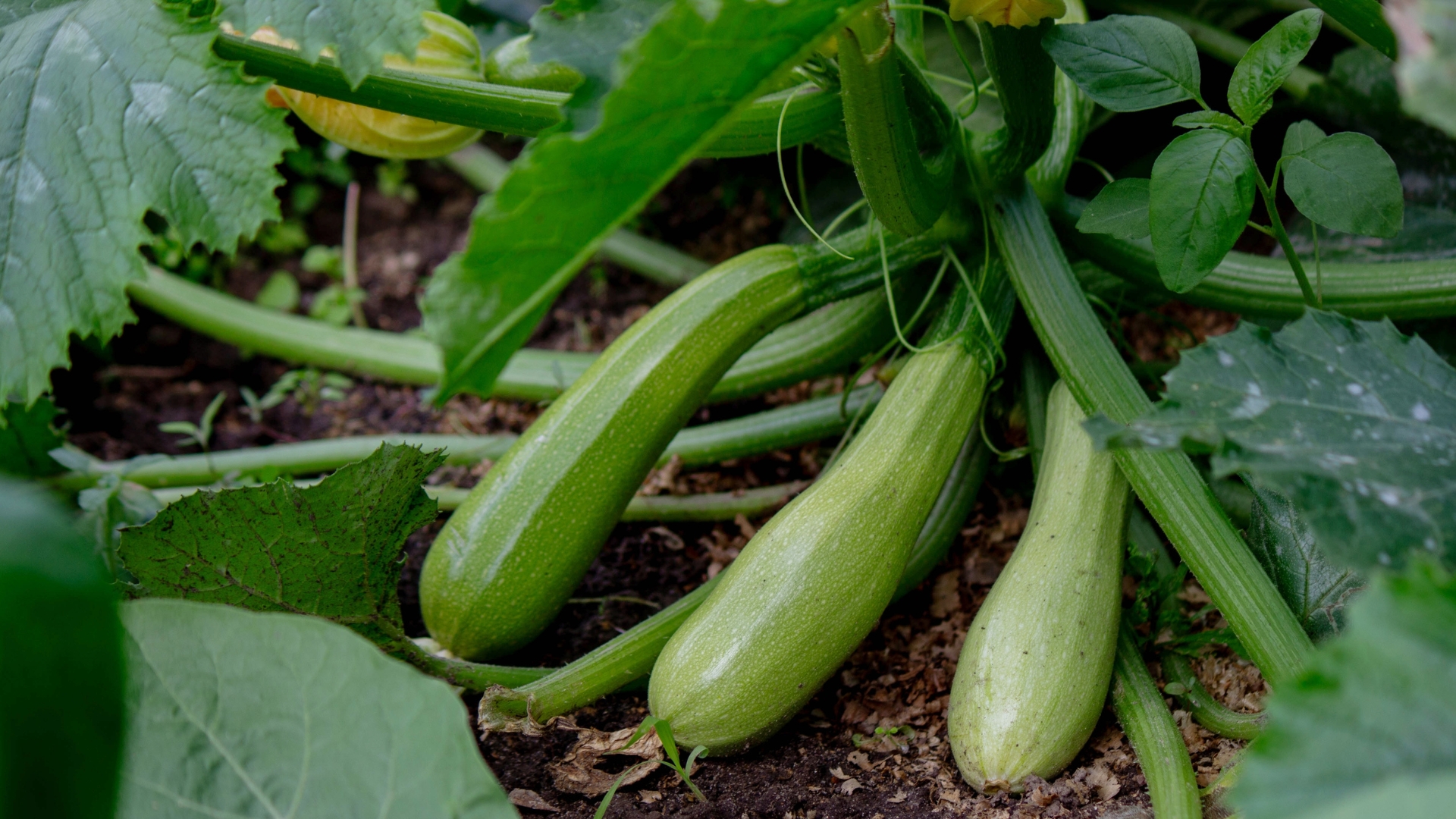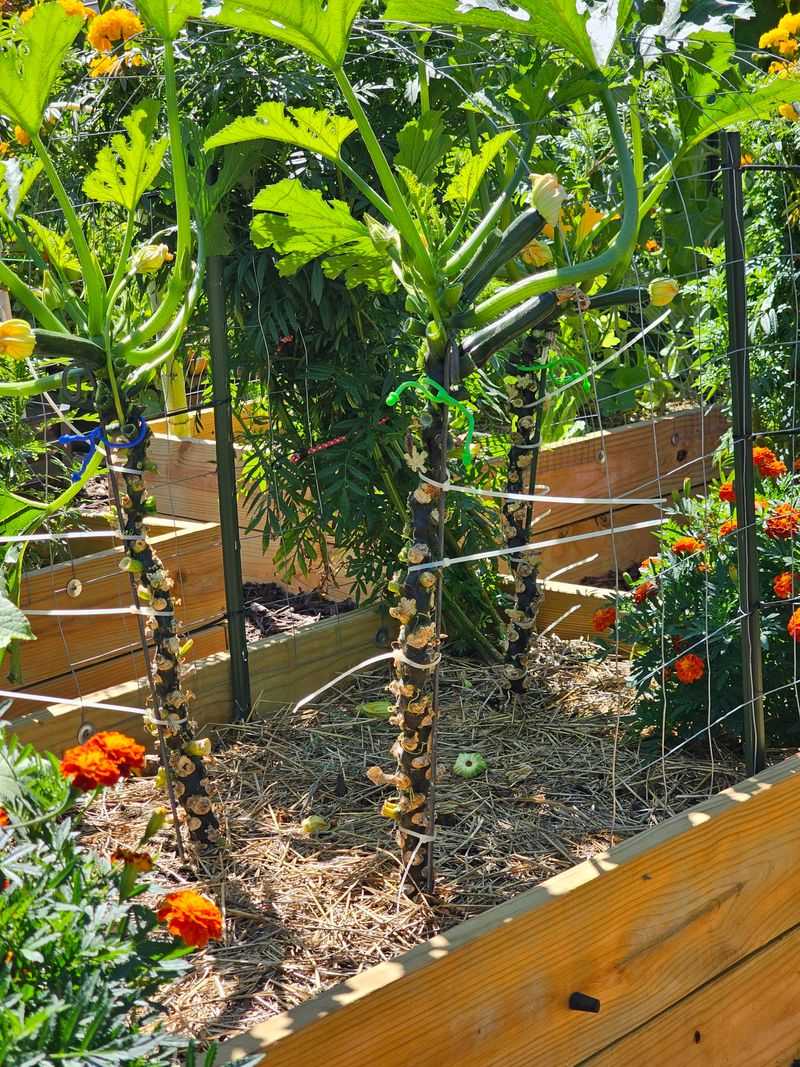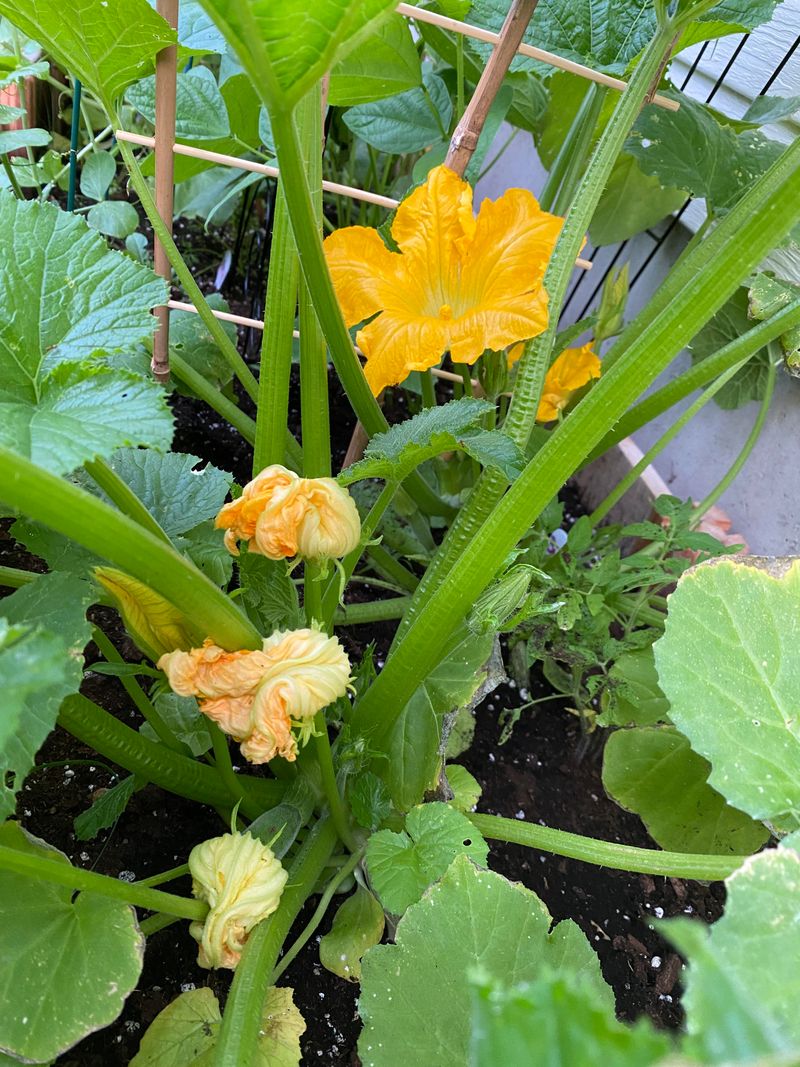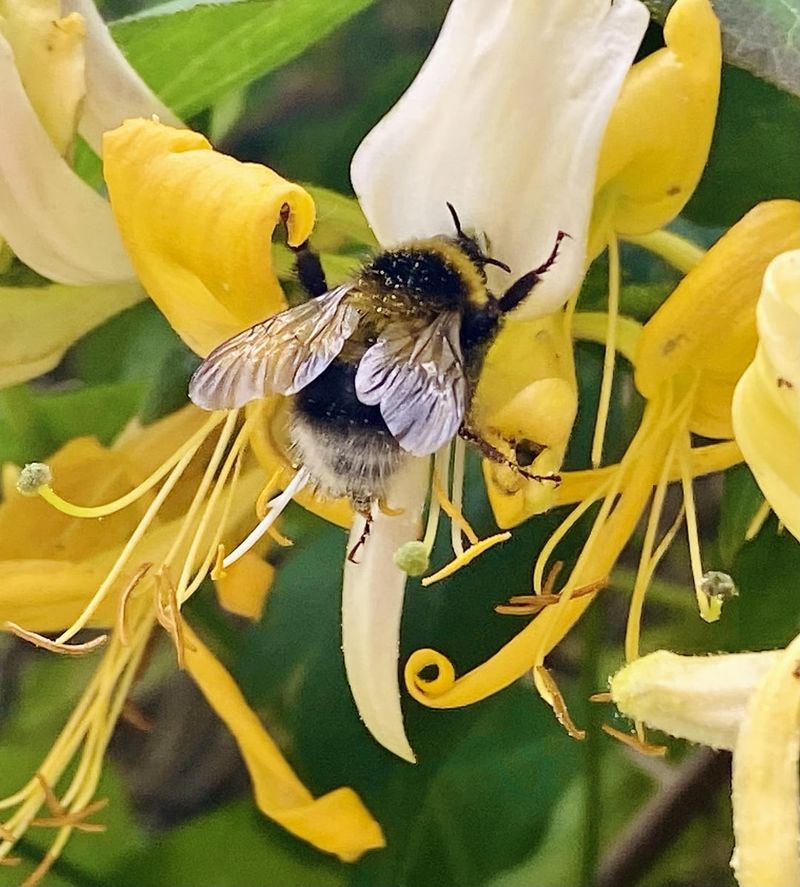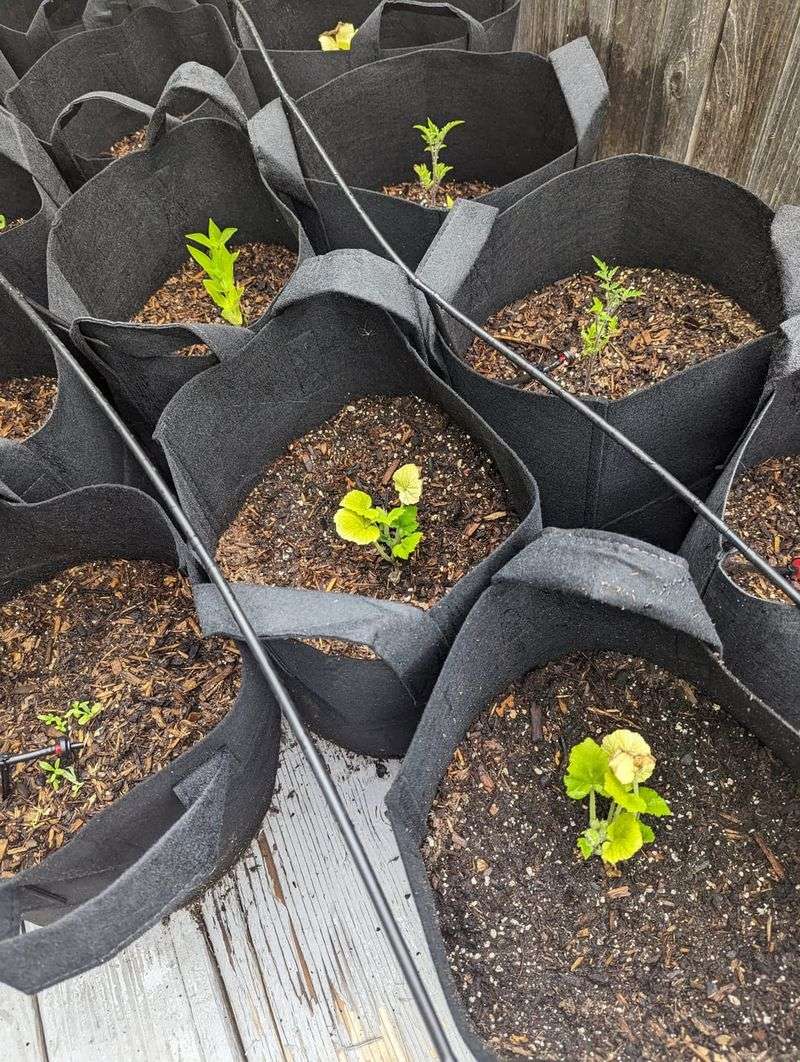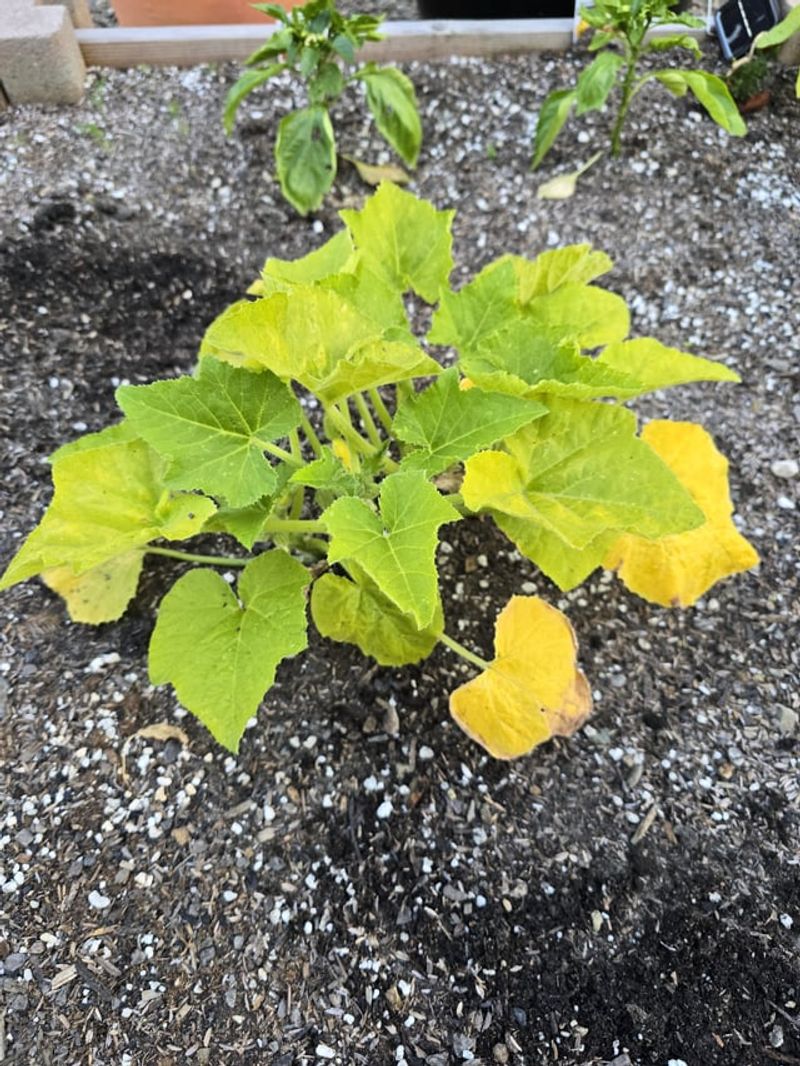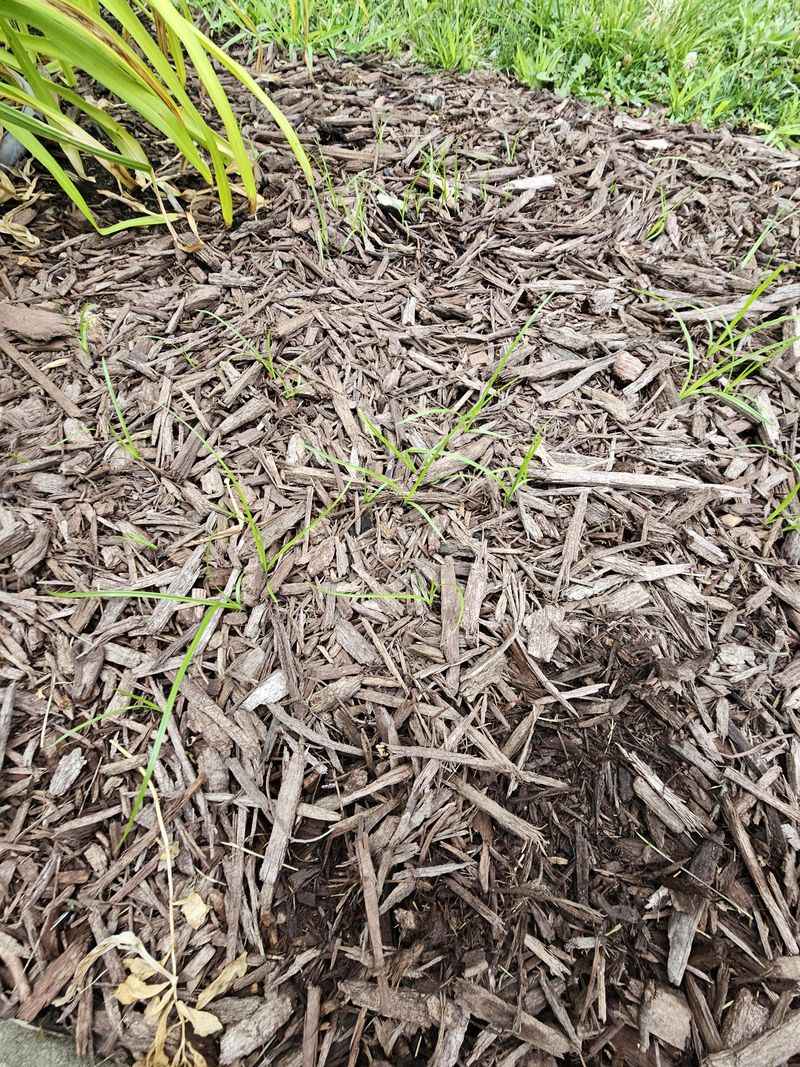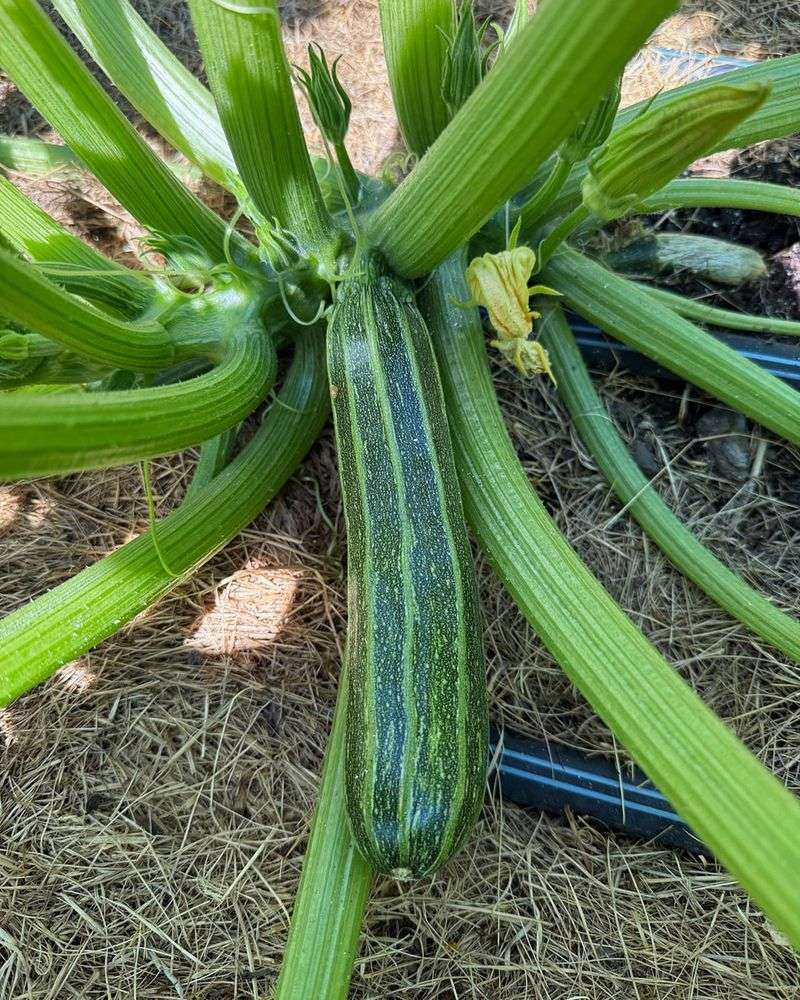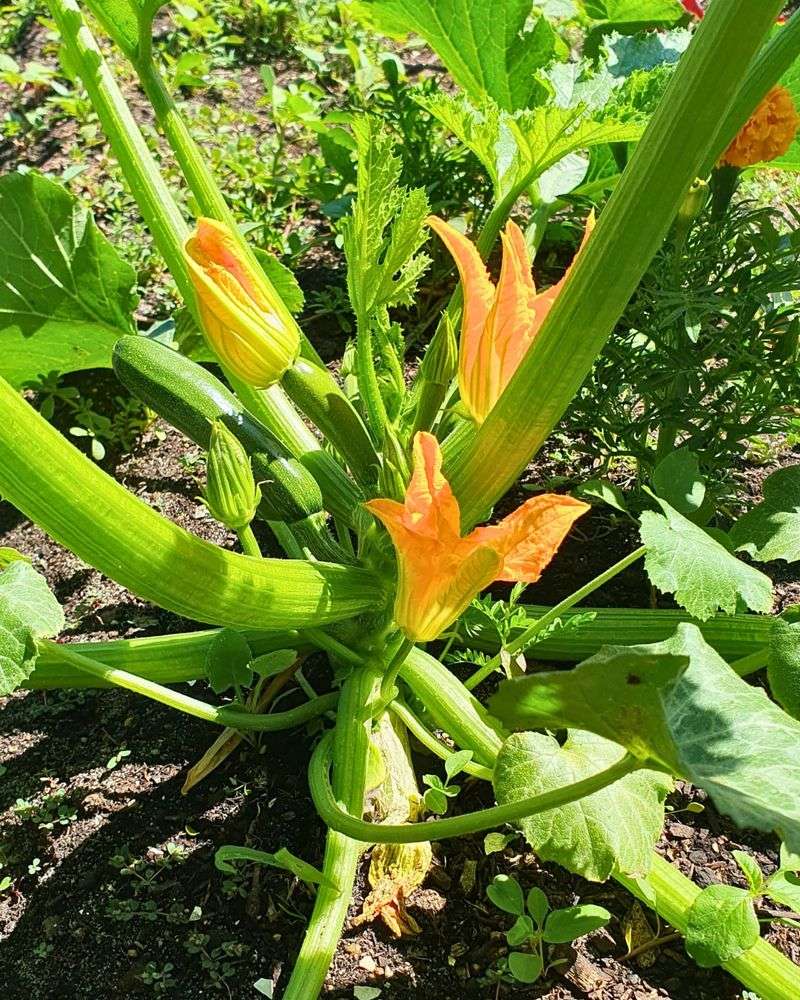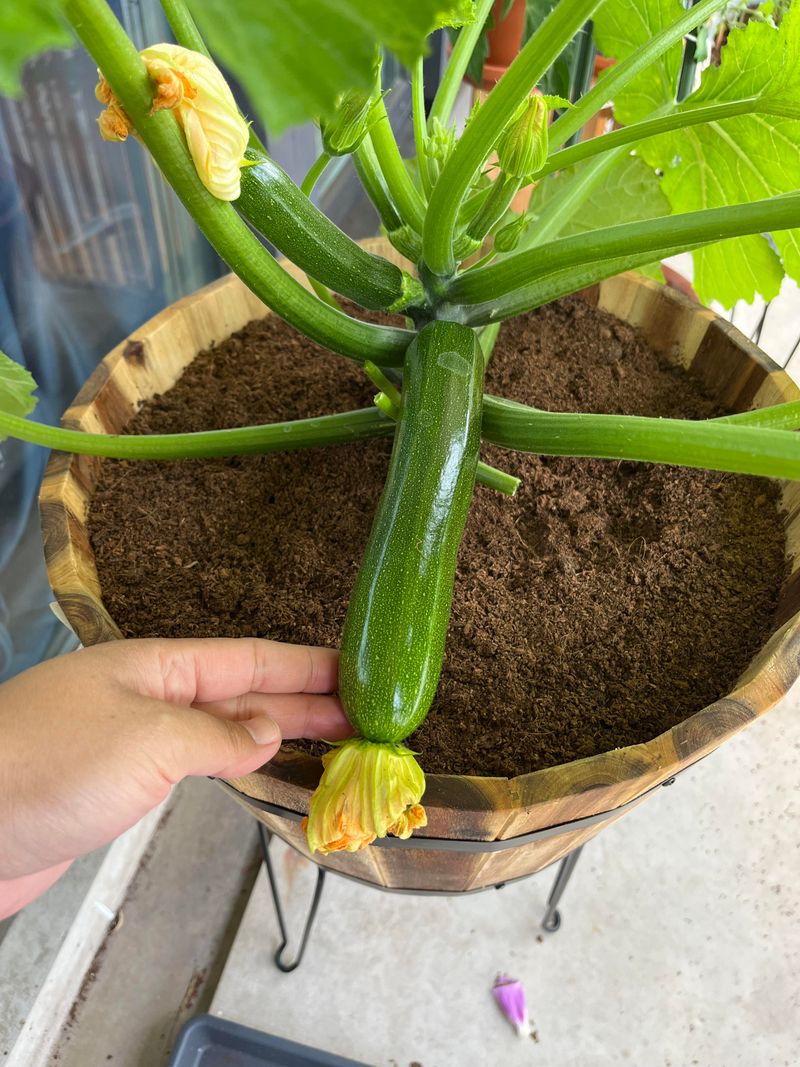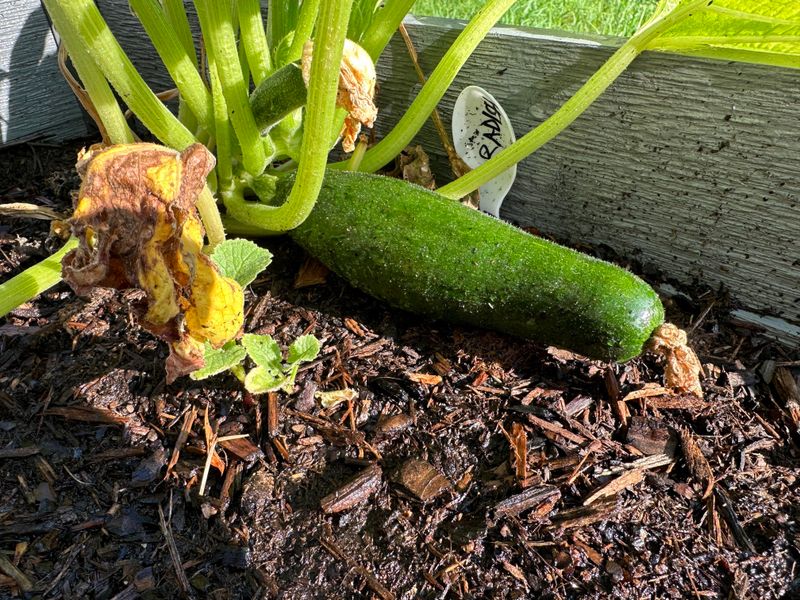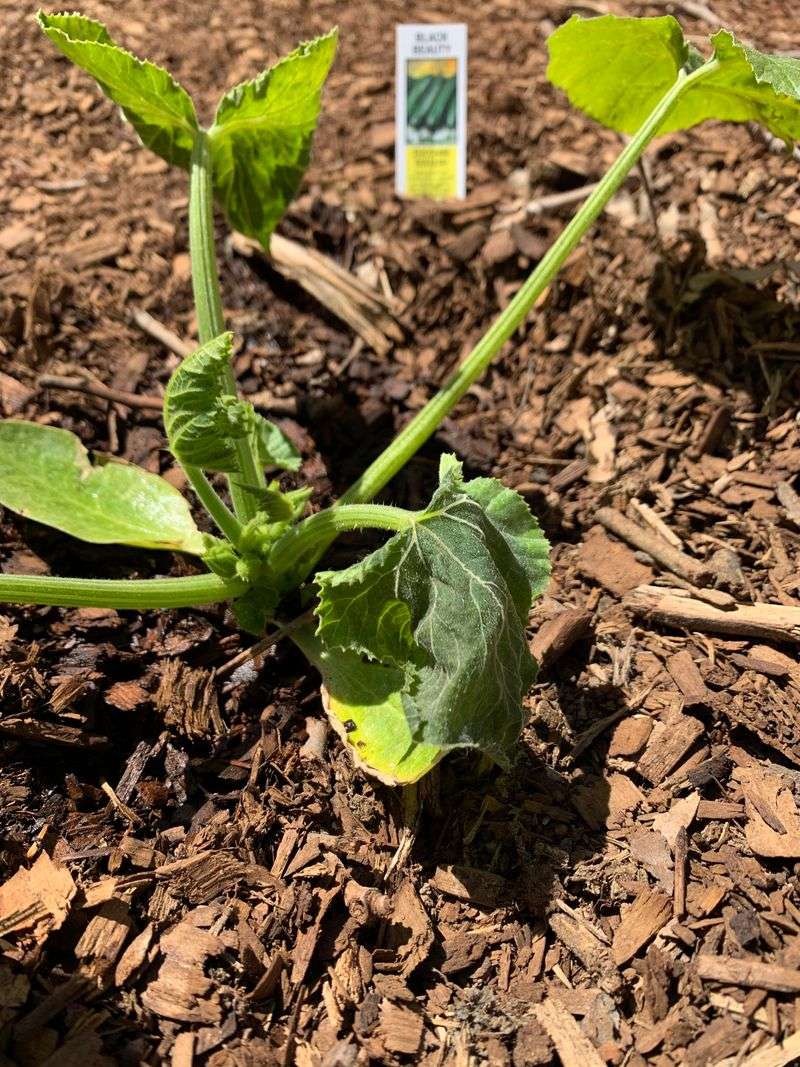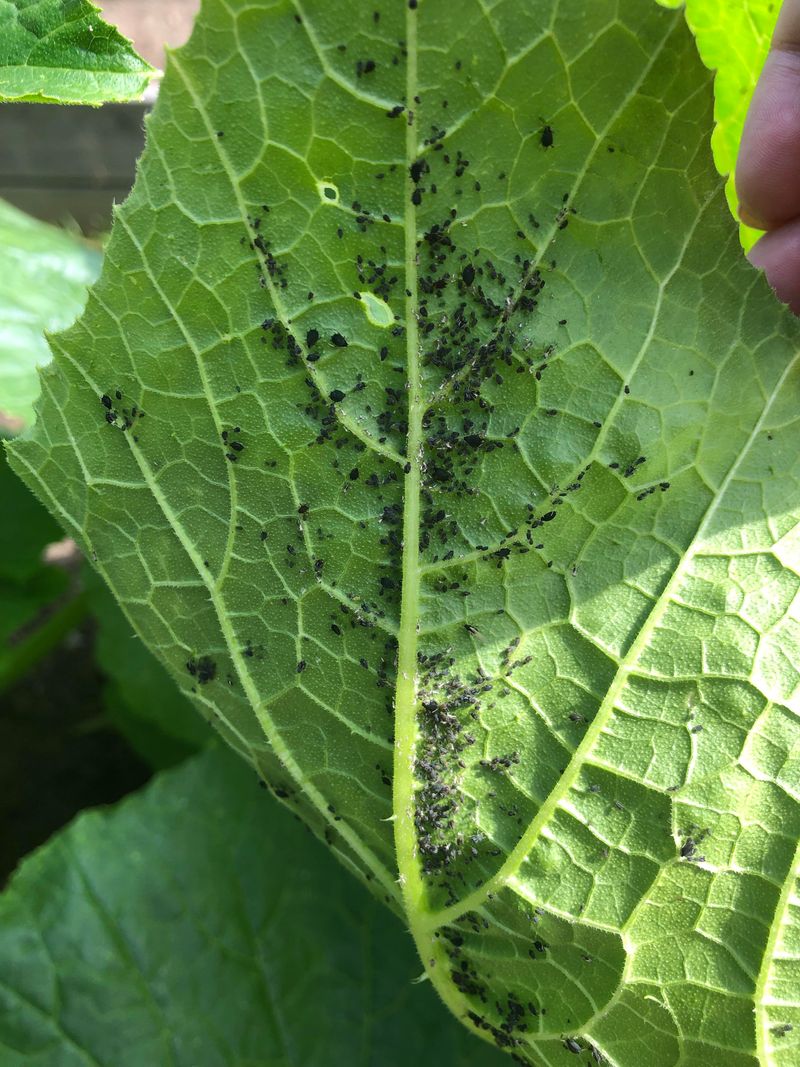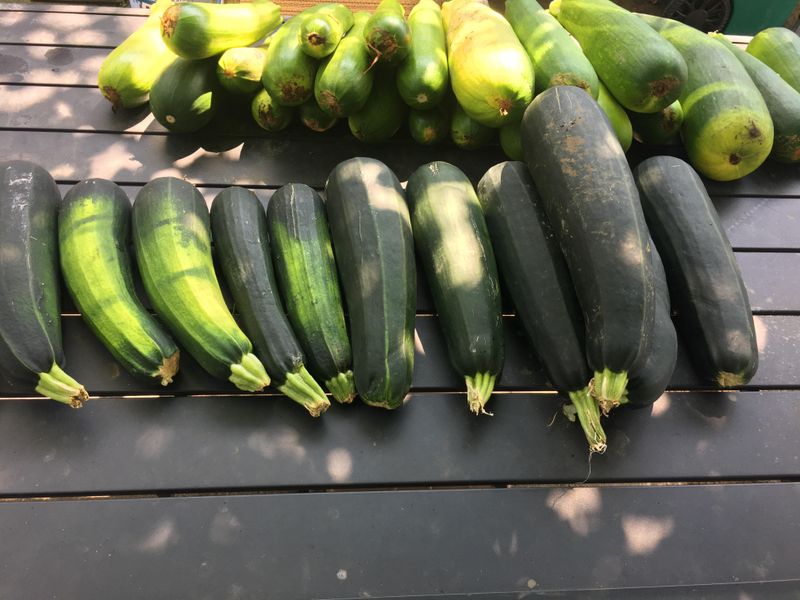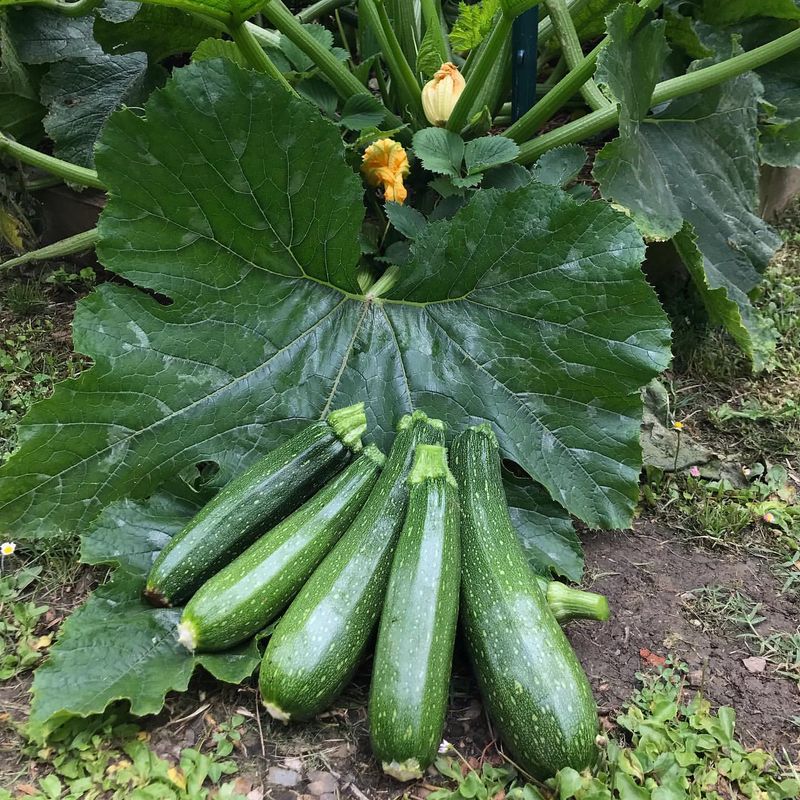Zucchini can be a little dramatic when it comes to pollination—I learned that the hard way. One summer, I had plenty of flowers but barely any fruit, and it drove me nuts.
Turns out, a few small changes made all the difference. Once I figured out how many plants were actually enough, everything just clicked.
If your zucchinis are being stubborn, this might be exactly what you need!
1. Plant at the right time
Georgia’s growing season offers two prime windows for zucchini planting. Early April after the last frost and again in August for fall harvests work best in most Georgia counties.
Timing matters because extreme summer heat can prevent proper pollination. When temperatures climb above 90°F, pollen becomes less viable, making those cooler spring and fall months ideal for successful fruit set.
2. Understand male and female flowers
Zucchini plants produce separate male and female flowers on the same plant. Males appear first with straight stems, while females have tiny zucchini fruits at their base.
Recognizing the difference helps Georgia gardeners monitor pollination progress. The ratio typically favors males, which is nature’s way of ensuring enough pollen is available when female flowers eventually develop, especially in Georgia’s variable climate.
3. Hand pollinate for reliability
Hand pollination guarantees results when natural pollinators are scarce in your Georgia garden. Simply transfer pollen using a small paintbrush or by removing a male flower and touching its center to female flowers.
Early morning is ideal for this task before Georgia’s heat intensifies. The pollen is most viable then, and the flowers are fully open but haven’t yet closed for the day, giving you the best chance for successful fertilization.
4. Attract native pollinators
Georgia’s native bees do excellent work pollinating zucchini when present in sufficient numbers. Plant pollinator-friendly flowers like coneflowers, black-eyed Susans, and native asters nearby to attract them.
Avoid using pesticides during flowering periods, as these chemicals harm beneficial insects. Many Georgia gardeners find that creating a diverse garden ecosystem naturally controls pests while supporting the pollinators their zucchini plants need.
5. Space plants properly
Proper spacing allows for adequate airflow between zucchini plants, reducing fungal issues common in Georgia’s humidity. Allow 3-4 feet between plants in all directions for bush varieties.
Well-spaced plants also make it easier for pollinators to access all flowers. Georgia gardeners often find that fewer, properly spaced plants actually produce more total zucchini than crowded gardens where plants compete for resources and pollinators struggle to navigate.
6. Water correctly
Georgia’s hot climate demands consistent moisture for zucchini plants. Water deeply at the soil level rather than overhead to keep leaves dry and prevent powdery mildew.
Proper watering supports flower production and retention. During Georgia’s summer heat, morning watering is best, giving plants moisture to support the day’s pollination activities without creating the humid overnight conditions that promote disease.
7. Monitor soil fertility
Zucchini are heavy feeders but excessive nitrogen causes abundant foliage with few flowers. Georgia’s naturally acidic soils often need lime amendments to reach the ideal pH of 6.0-6.8 for zucchini.
A soil test through the University of Georgia Extension office provides precise recommendations. Balanced fertility promotes strong plants that produce both male and female flowers in the proper sequence for successful pollination throughout the growing season.
8. Choose the right varieties
Some zucchini varieties perform better than others in Georgia’s climate. ‘Dunja’ and ‘Spineless Beauty’ show excellent disease resistance and heat tolerance important for Georgia gardens.
Parthenocarpic varieties like ‘Parthenon’ can produce fruit without pollination, a helpful trait during extreme heat. Local Georgia gardeners often share knowledge about which heirloom varieties have adapted well to specific regions of the state over generations.
9. Grow the right number of plants
Most Georgia families need just 2-3 zucchini plants for fresh eating. Each healthy plant can produce 6-10 pounds of zucchini over the growing season in ideal conditions.
For preserving or sharing, 4-6 plants suffice for most households. Georgia’s long growing season, especially in the southern parts of the state, means each plant produces for an extended period, making fewer plants necessary than in northern climates.
10. Implement succession planting
Georgia’s long growing season allows for staggered zucchini plantings. Start new plants every 3-4 weeks to ensure continuous flowering and opportunities for pollination throughout the season.
This strategy hedges against pollination failures during heat waves. Many experienced Georgia gardeners plant their final succession in late summer for a fall harvest when temperatures moderate and pollination conditions improve dramatically.
11. Provide afternoon shade
Georgia’s intense summer sun can stress zucchini plants and reduce pollination success. Consider planting where taller crops or structures provide afternoon shade during the hottest months.
Shade cloth with 30% filtering works well in open gardens. Georgia gardeners have noticed that slightly shaded plants often produce more female flowers and successfully set more fruit during July and August than those in full sun positions.
12. Mulch appropriately
Proper mulching maintains soil moisture and temperature, critical factors for flower production and pollinator activity. Organic mulches like pine straw, popular in Georgia, keep soil temperatures moderated.
Avoid piling mulch against plant stems to prevent rot in Georgia’s humidity. A 2-3 inch layer extending to the drip line creates the ideal microclimate for roots while helping suppress weeds that might compete with your zucchini plants.
13. Monitor and manage pests
Squash vine borers and pickleworms, common in Georgia, can devastate zucchini plants before pollination occurs. Floating row covers early in the season help protect plants, but must be removed during flowering for pollination.
Integrated pest management using Georgia-native beneficial insects offers sustainable control. Timing plantings to avoid peak pest pressure periods is another strategy experienced Georgia gardeners employ to ensure plants reach flowering stage in good health.
14. Harvest regularly
Frequent harvesting signals plants to produce more flowers and fruits. In Georgia’s climate, zucchini can grow from flower to oversized fruit in just 4-5 days during peak season.
Check plants every morning during productive periods. Many Georgia gardeners find that picking zucchini when they reach 6-8 inches long not only provides the best texture and flavor but also maximizes the plant’s energy for continued flower production and successful pollination.
15. Keep records for future seasons
Tracking pollination success helps identify patterns in your Georgia garden. Note weather conditions, planting dates, varieties, and yields to refine your approach each year.
Many Georgia gardeners maintain simple journals with this information. The University of Georgia Extension office offers printable garden journals designed specifically for the state’s growing conditions that include sections for tracking pollination success in squash and other vegetables.

